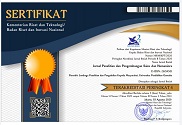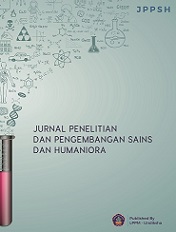Former Oesing Kitchen Colonial Building in Banyuwangi as Urban Heritage
DOI:
https://doi.org/10.23887/jppsh.v8i2.81865Keywords:
Building, Colonial, Former Oesing Kitchen, Banyuwangi Urban HeritageAbstract
Banyuwangi Regency is rich in pen-colonial legacy. Colonial remains can still be found in several parts of the city, but quite a few have changed form, even looking different from their original state. One of the buildings is the former Oesing kitchen. The research aims to explore the facade-forming and space-forming elements in the former Oesing Kitchen, Banyuwangi, and the condition of the former Oesing building after restoration. The research method used is qualitative, with data collection techniques through observation, interviews, and documentation. The colonial buildings selected as study cases were carried out using purposive sampling techniques using several criteria. Data analysis was carried out inductively with greater emphasis on historical meaning and value. The results of the observations are a way to explain and conclude the two elements that form the architectural character of these colonial buildings. The research results show that the former Oesing kitchen building has an architectural character that can be determined from the windows, entrance, roof, and walls. Meanwhile, other characters can be determined from the basic plan and shape of the building. Apart from that, there are historical supporting objects such as chimneys, old tombs, nagabulan, and agricultural buildings.
References
Ahmad, A. R., & Syamsu, T. (2024). An Analysis Traditional House ‘ Tongkonan ’ of Tana Toraja : A Semiotic Study. 1(3), 144–153.
Alhazmi, A. A., & Kaufmann, A. (2022). Phenomenological Qualitative Methods Applied to the Analysis of Cross-Cultural Experience in Novel Educational Social Contexts. Frontiers in Psychology, 13(April). https://doi.org/10.3389/fpsyg.2022.785134.
Arslan et al. (2016). This document is discoverable and free to researchers across the globe due to the work of AgEcon Search . Help ensure our sustainability . AgEcon Search, 18.
Brouwer, P., & Jõekalda, K. (2020). Introduction: architectural identities of European peripheries. Journal of Architecture, 25(8), 963–977. https://doi.org/10.1080/13602365.2020.1851542.
Cheng, I., Cheng, I., Ii, C. L. D., & Wilson, M. O. (n.d.). R ACE AND MODERN ARCHITEC TURE A Critic al His tor y f rom the Enlightenment to the Present.
Crespi-Vallbona, M. (2021). Satisfying experiences: guided tours at cultural heritage sites. Journal of Heritage Tourism, 16(2), 201–217. https://doi.org/10.1080/1743873X.2020.1771345.
Feng, H., Liyanage, D. R., Karunathilake, H., Sadiq, R., & Hewage, K. (2020). BIM-based life cycle environmental performance assessment of single-family houses: Renovation and reconstruction strategies for aging building stock in British Columbia. Journal of Cleaner Production, 250(xxxx). https://doi.org/10.1016/j.jclepro.2019.119543.
Galli, J. (2022). Hypochondria as a form factor: The role of colonial anxieties as shapers of buildings and urban spaces in British Africa. Planning Perspectives, 37(1), 103–126. https://doi.org/10.1080/02665433.2021.1926314.
Gao, X., Nakatani, J., Zhang, Q., Huang, B., Wang, T., & Moriguchi, Y. (2020). Dynamic material flow and stock analysis of residential buildings by integrating rural–urban land transition: A case of Shanghai. Journal of Cleaner Production, 253. https://doi.org/10.1016/j.jclepro.2019.119941.
Hsu, P. hsiang. (2023). Reconstruction of the lost colonial architecture in the context of heritage tourism: Dutch Trading Post in Taiwan. Built Heritage, 7(1). https://doi.org/10.1186/s43238-023-00096-y.
Kangile, R. J., Mgeni, C. P., Mpenda, Z. T., & Sieber, S. (2020). The determinants of farmers’ choice of markets for staple food commodities in Dodoma and Morogoro, Tanzania. Agriculture (Switzerland), 10(5), 1–12. https://doi.org/10.3390/agriculture10050142.
Karana, E., Barati, B., & Giaccardi, E. (2020). Living artefacts: Conceptualizing livingness as a material quality in everyday artefacts. International Journal of Design, 14(3), 37–53.
Lofland, L. H. (2020). The Public Realm. The Public Realm. https://doi.org/10.4324/9781315134352.
Lopesi, L. (2024). Promiscuous Possibilities : Regenerating a Decolonial Genealogy of Samoan Reproduction. 1–13.
Mishra, M. (2021). Machine learning techniques for structural health monitoring of heritage buildings: A state-of-the-art review and case studies. Journal of Cultural Heritage, 47(xxxx), 227–245. https://doi.org/10.1016/j.culher.2020.09.005.
Nightingale, S., Spiby, H., Sheen, K., & Slade, P. (2020). LJMU Research Online m. Tourism Recreation Research, 19. http://researchonline.ljmu.ac.uk/id/eprint/8705/.
Pijet-Migoń, E., & Migoń, P. (2022). Geoheritage and Cultural Heritage—A Review of Recurrent and Interlinked Themes. Geosciences (Switzerland), 12(2). https://doi.org/10.3390/geosciences12020098.
Pratama, M. Y. (2021). Governance and Infrastructure Development as Indonesia Decentralises: Case Study of Industrial Estate and Port Development in Bantaeng and Banyuwangi Districts. January, 1–331.
Prieto, A., & Oldenhave, M. (2021). What makes a façade beautiful? Journal of Facade Design and Engineering, 9(2), 21–45. https://doi.org/10.7480/jfde.2021.2.5540.
Priya, A. (2021). Case Study Methodology of Qualitative Research: Key Attributes and Navigating the Conundrums in Its Application. Sociological Bulletin, 70(1), 94–110. https://doi.org/10.1177/0038022920970318.
Rachmah, H., Tsaury, A. M., Alhamuddin, A., & Gunawan, R. (2022). Development of Social Skills based on Local Wisdom in the Osing Community of Kemiren Village Banyuwangi, East Java. Proceedings of the 4th Social and Humanities Research Symposium (SoRes 2021), 658(SoRes 2021), 211–215. https://doi.org/10.2991/assehr.k.220407.041.
Resti Nurhayati, D. B., Budi Sarwo, D. Y., & Koesmartadi, C. (2024). Local Wisdom and the Traditional Marriage Law of Osing Kemiren Village in the Era of Information Technology. KnE Social Sciences, 2024, 802–816. https://doi.org/10.18502/kss.v8i21.14796.
Rivero Moreno, L. D. (2020). Sustainable city storytelling: cultural heritage as a resource for a greener and fairer urban development. Journal of Cultural Heritage Management and Sustainable Development, 10(4), 399–412. https://doi.org/10.1108/JCHMSD-05-2019-0043.
Sufyan, A., Prajnawrdhi, T. A., & Agusintadewi, N. K. (2020). Cultural Meaning and Environmental Quality Towards Settlements Characteristics of Kemiren Using Tribe. Journal of Architecture&ENVIRONMENT, 19(2), 173. https://doi.org/10.12962/j2355262x.v19i2.a6939.
Suwitra, I. M. S., Sudiarta, I. K., Suryawan, I. N., Imaniar, D., & Hentika, N. P. (2023). The Existence of Customary Land and its Utilization Pattern for Tourism Business. Randwick International of Social Science Journal, 4(2), 28–42. https://doi.org/10.47175/rissj.v4i2.644.
Tulistyantoro, L., Sitinjak, R. H. I., & Setiawan, A. P. (2021). The Spatial Core of Nusantara Dwellings: Women, Fire and Pawon. X(X), 1–7. http://repository.petra.ac.id/19041/.
Tulistyantoro, L., Tedjokoesoemo, P., & Kusumarini, Y. (2020). Elastic Space in the Interior of Indonesia’s Traditional Settlement. https://doi.org/10.4108/eai.2-11-2019.2294863.
van der Hoeven, A. (2020). Valuing Urban Heritage Through Participatory Heritage Websites: Citizen Perceptions of Historic Urban Landscapes. Space and Culture, 23(2), 129–148. https://doi.org/10.1177/1206331218797038.
Wantu, F. M., Mahdi, I., Purba, A. S., Haris, I., & ... (2021). The Law on Plant Protection, an Effort to Save Indonesia’s Earth: A Review of International Publications. International Journal …, 10(1), 867–879. http://modern-journals.com/index.php/ijma/article/view/683.
Warjiyati, S., Salam, S., Sybelle, J. A., Fida, I. A., & Ridwan. (2023). The Legalization and Application of Osing Indigenous People’s Customary Law Model in the Legal System. Lex Localis, 21(4), 853–875. https://doi.org/10.4335/21.4.853-875(2023).
Whaley, D., Damyar, K., Witek, R. P., Mendoza, A., Alexander, M., & Lakey, J. R. T. (2021). Cryopreservation: An Overview of Principles and Cell-Specific Considerations. Cell Transplantation, 30, 1–12. https://doi.org/10.1177/0963689721999617.
Downloads
Published
Issue
Section
License
Copyright (c) 2024 Miskawi Miskawi

This work is licensed under a Creative Commons Attribution-ShareAlike 4.0 International License.
Authors who publish with the Jurnal Penelitian dan Pengembangan Sains dan Humaniora agree to the following terms:
- Authors retain copyright and grant the journal the right of first publication with the work simultaneously licensed under a Creative Commons Attribution License (CC BY-SA 4.0) that allows others to share the work with an acknowledgment of the work's authorship and initial publication in this journal.
- Authors are able to enter into separate, additional contractual arrangements for the non-exclusive distribution of the journal's published version of the work (e.g., post it to an institutional repository or publish it in a book), with an acknowledgment of its initial publication in this journal.
- Authors are permitted and encouraged to post their work online (e.g., in institutional repositories or on their website) prior to and during the submission process, as it can lead to productive exchanges, as well as earlier and greater citation of published work. (See The Effect of Open Access)









